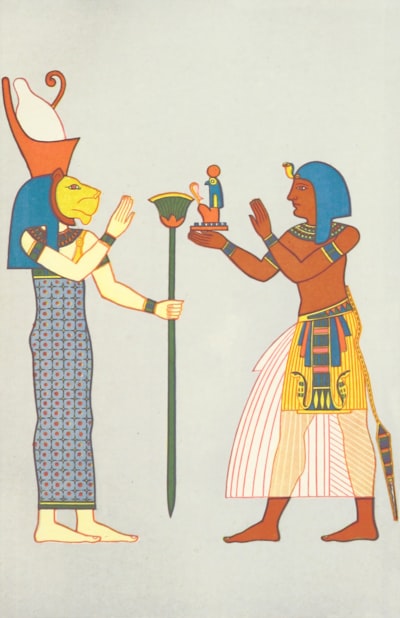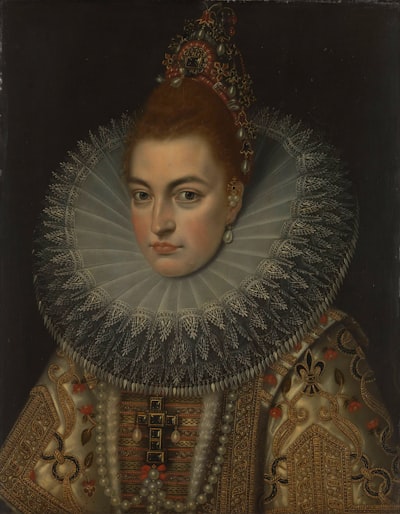The Untold History of Hair Extensions: From Ancient Egypt to Modern Trends
What is the history behind hair extensions?
Hair extensions have a long history, dating back to ancient Egypt where both men and women used extensions to enhance their hair. Over the years, hair extensions have evolved in terms of materials and techniques. Today, they are a popular beauty accessory, providing length, volume, and versatility to hair. In the beginning, hair extensions were made from natural materials such as human or animal hair. As time went on, synthetic fibers were introduced, offering a more affordable and diverse option. At Noelle Salon, we like to consider ourselves part of the history of hair extensions with our 30-year tenure.
First Hair Extensions in History: Egypt
In ancient Egypt, hair extensions, or hairpieces, were a symbol of beauty and power. Both men and women used various techniques to achieve longer and fuller hair. They would attach wigs made from human or animal hair and hair pieces to their hair using beeswax or resin. These extensions not only added length but also served as a status symbol, signifying wealth and social standing in ancient times.
Hair extensions in Ancient Rome
The Romans also embraced the use of hair extensions. They would wear wigs made of human or animal hair as a fashion statement. These wigs were often elaborate and intricate, styled with curls, braids, and intricate designs. Hair extensions, including red hairpieces, were not only popular among the elite but also among the common people, who would make use of natural hair or hair from slaves to achieve a more glamorous look. Queen Elizabeth I, known for her height-enhancing hairpieces and wigs, also played a major role in popularizing hair extensions, including red hairpieces, during her reign in the Elizabethan era.
Hair extensions Renaissance era
During the Renaissance era, hair extensions became even more elaborate. Women would wear wigs made of human hair, often adorned with jewels, flowers, or other accessories. These wigs were a symbol of wealth and high social status, as they were expensive to acquire and maintain.
Clip In Hair Extensions History
Fast forward to the present day, one of the most popular types of hair extensions is clip-in extensions. These convenient and easy-to-use extensions, including synthetic extensions, are made from high-quality synthetic or luxurious human hair extensions and come in a variety of colors, lengths, and styles. They can be easily attached to your natural hair using small clips, allowing you to instantly add length, volume, or highlights without any long-term commitment.
Clip-in hair extensions have revolutionized the world of hair styling, providing a quick and temporary solution for those looking to change up their hairstyle without any damage or hassle.
History of Hair Extensions and Wigs in the 1960s
The 1960s marked a pivotal moment in the history of hair extensions, particularly in the form of wigs. This era was characterized by bold and daring fashion choices, and hairstyles were no exception. Women embraced the freedom to experiment with different looks, and wigs became a popular accessory to achieve dramatic transformations, including Brigitte Bardot’s famous look. King Louis XIII of France in the 17th century was somewhat of a trendsetter when it came to wigs.
My mother, like many women of her time, was captivated by the mod aesthetic that defined the 1960s. Her wiglet and hairfalls boasted a modern-looking hairstyle that perfectly complemented her fashionable outfits. As I observed her confidently rocking this trendy look, my fascination with hair extensions began.

Hair extensions in the modern era
In the early 20th century, hair extensions underwent a significant transformation with the invention of synthetic materials and advanced attachment techniques. Synthetic hair extensions became more accessible and affordable, allowing people of all backgrounds to experiment with different hairstyles. The introduction of clip-in extensions made it even easier for individuals to change their look without committing to a long-term hairstyle for the first time. However, it was in the Victorian era that we began to see the introduction of hair extensions as we think of them today, with tonnes of human hair imported to the UK to be made into “switches” – long flowing clip-ins that were worn in styles like doughnut buns.
As time progressed, hair extensions evolved further, with the focus shifting from simply adding length to creating natural-looking volume and thickness. Innovations in techniques like fusion bonding and tape-in extensions allowed for more seamless integration with natural hair, making it difficult to distinguish between the wearer's real hair and the extensions, resulting in a perfect match. Whether you're in London or any other city, mastering hair extensions can help you achieve a stylish look for the winter season.
 Enter Noelle Salon 30 Years Working With Hair Extensions 90s
Enter Noelle Salon 30 Years Working With Hair Extensions 90s
The 90's was a great error, the resurgence of big hair ala Pamela Anderson was a defining trend of the decade. We all loved frosted lips and high hair with a subtle tease reminiscent of the 1960s bombshells. The problem was not having enough hair to create these iconic hair designs, voila hair extensions, popularized by pop stars such as Christina Aguilera in her breakout hit “Dirrty” with Redman, were the answer!
At the time, there were only two types of hair extensions available; braided hair weaves, and individual strand extensions made from hair bundles using a wax-like substance that adhered to the hair. Hair extensions were mainly worn by celebrities and models, but my goal was to bring them to the forefront by creating a natural weft using a weaving frame and three cords, as pioneered by Christina Jenkins. This new process, invented by Christina Jenkins, gave women, especially African-American women, exciting new freedom to choose from hairstyles that would previously be unattainable.
I had clients travel from all over the United States for this innovation! I had a primitive website launched in 1997, the early days of the Internet, but it attracted much attention. I was featured in many publications, commercials, and news shows, the salon attracted many celebrities such as Steven Tyler of Aerosmith fame, and local artists and celebrities.
The thirty-year hair extension journey has been filled with meeting exciting people, fashion shows, and working with some of the most talented hair artists.

Hair Extension History In The Early 2000s
Celebrities like Brittany Spears, Christina Agulera, Jennifer Lopez, Paris Hilton, and Victoria Beckham were making hair extensions famous, including long hair extensions! Their long, luscious locks became the envy of women everywhere, sparking a trend that would last for years to come. Suddenly, hair extensions weren't just for the rich and famous - they were accessible to anyone who wanted to transform their look.
With the rise of social media and reality TV, hair extensions became even more popular. People were eager to imitate the glamorous styles they saw in their favorite celebrities. Salons across the country were bustling with clients eager to get their own set of extensions.
The Mid-2000s Brought in New Methods
But it wasn't just about lengthening hair anymore. Hair extensions began to evolve, offering more versatility and customization options. Different types of extensions were introduced, such as clip-ins, tape-ins, and fusion extensions, allowing people to experiment with various hairstyles without committing to a permanent change.
The demand for hair extensions skyrocketed in the early 2000s, leading to an influx of new brands and suppliers in the market. This made it easier for salons and individuals to access high-quality extensions at more affordable prices. As a result, the industry became more inclusive and diverse, catering to different hair types, textures, colors, and stylists.

New Techniques
Veila Pull-Thru
To build a better mouse trap, and offer hair extensions that are designed for people with fragile hair, the pull-thru technique by Noelle Spinosa offers a gentler and more seamless way to wear extensions. Developed by the renowned hairstylist Veila, the pull-thru technique revolutionized the world of hair extensions.
Unlike traditional methods that rely on adhesive or heat, the pull-thru technique involves threading individual strands of hair through a specialized silicone ring. This innovative approach ensures minimal damage to the natural hair while providing a secure hold for the extensions.
The pull-thru technique is particularly beneficial for those with fragile or thinning hair, as it eliminates the need for excessive tension or heavy attachments. It allows individuals to enjoy fuller and longer locks without causing damage!
Help With Hair Loss
Hair extensions have not only provided people with the opportunity to experiment with different hairstyles, but they have also become a source of solace for those dealing with hair loss. One of the most remarkable advancements in this regard is the development of hair extensions specifically designed to help individuals cope with hair loss.
These specialized extensions are crafted using lightweight and breathable materials that blend seamlessly with natural hair. They can be attached in a way that covers bald spots or areas of thinning hair, giving individuals the appearance of fuller and thicker locks. This not only boosts their confidence but also allows them to regain a sense of normalcy

Big Brands Like Bellami Hair Extensions
Owned By Beauty Industry Group
Bellami Extensions Bellami Hair Extensions, a leading brand in the industry, is owned by the Beauty Industry Group. Known for its high-quality extensions and wide range of options, Bellami has become a go-to choice for many individuals seeking to enhance their hair.
the Beauty Industry Group now owns some of the top hair extension brands such as Beauty Works, Donna Bella, Hot Heads, and Luxy Hair! They are most definitely the global leader in the world of hair extensions.
Boutique Brands of Extensions
Boutique brands of hair extensions offer a unique and personalized experience for those seeking to elevate their hairstyle. These smaller, independent brands pride themselves on attention to detail and craftsmanship, ensuring that each set of extensions is tailored to meet the individual's needs.
With boutique brands, you can expect a wide range of options in terms of color, texture, and length. Whether you're looking for natural-looking extensions or something more bold and adventurous, these brands have got you covered.
One advantage of choosing boutique brands is the level of customer service they provide. Many of these businesses prioritize building relationships with their clients.
Moving Forward Towards The Future
The future of hair extensions looks promising, with advancements in technology and a growing demand for versatile and natural-looking options. With the rise of sustainable and ethically sourced materials, hair extensions are becoming more eco-friendly.
Furthermore, as the demand for diversity continues to increase, brands are now offering a wider range of shades, textures, and lengths to cater to different hair types and styles.

in Conclusion
We at Noelle Salon, are looking forward to advancing our brand, and helping clients with hair issues! The history behind hair extensions is a fascinating journey that has brought us to the present day, In the future we hope to make hair extensions affordable to everyone who wants them, without sacrificing quality. As we reflect on the history behind hair extensions, it's clear that the industry has come a long way. Once considered a luxury exclusive to the elite, hair extensions have evolved into a mainstream beauty staple that allows individuals to transform their looks with ease.










